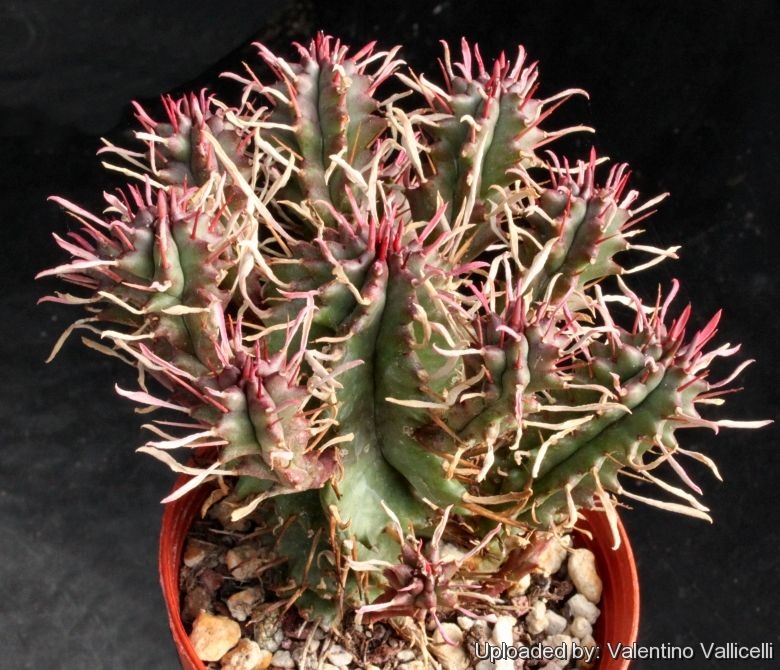
Euphorbia aggregata Photo by: Valentino Vallicelli
Origin and Habitat: Eastern Cape Province of the Republic of South Africa. (North of Grahamstown to Somerset East and to Graaff-Reinet.)
Habitat: Stony slopes, at the sunny north-side of hill or mountains.
Synonyms:
See all synonyms of Euphorbia aggregata
Common Names include:
ENGLISH: Pincushion
AFRIKAANS (Afrikaans): Voetangel
Description: It is a dwarf dioecious succulent shrub, very spiny and free-branching that forms a low tufted cushion-like mass composed of hundreds of heads that grows up to 1 m in diameter, but very old large plants with up to 40.000 (or even more) heads has been reported. It is a very variable species and even in habitat not two plants are similar. They vary mostly in body colour, colour, number and length of the spines and colour and size of the nectar-gland. E. aggregata is closely related with Euphorbia feroxSN|13372]]SN|13372]] and Euphorbia pulvinataSN|18705]]SN|18705]], which can be recognised by their striking growing-shape. Therefore its more likely that intermediate forms between the mentioned species will occur in habitat. The fierce peduncles that characterize Euphorbia feroxSN|13372]]SN|13372]] are few in number on this species.
Stem: Usually has a very short stem with numerous branches in a whorl close to the ground.
Branches: 8-9-(sometimes 7-)angled, blue-grey or grass green on the growing part, brown below, 2-4,5 cm thick, 5-7,5 cm tall.
Ribs: Obtuse, subentire, broadly triangular between them at the tips, becoming less prominent and the grooves flattened below.
Leaves: Rudimentary, 2-2,5 cm long, shortly linear or linear-lanceolate, acute, fleshy, soon deciduous;
Spines (modified peduncles): About 5-8 mm long and 8 mm apart, minutely hairy and purplis when young, absent from some parts of the stems. The “spines” are only the solitary sterile peduncles which endure.
Flower: The flowers are solitary cyathia, simple, near the branches tips, about 3 mm in diameter; peduncles up to 3 mm, with a few small Bracts. Nectar glands spreading, separate greenish-yellow or purple.
Fruit: Subglobose, up to 6 mm in diameter
Seeds: Ovoid, smooth.
Subspecies, varieties, forms and cultivars of plants belonging to the Euphorbia aggregata group
 Euphorbia aggregata A.Berger: it forms a tufted cushion-like mass composed of hundreds of heads up to 7,5 cm tall and 1 m in diameter.
Euphorbia aggregata A.Berger: it forms a tufted cushion-like mass composed of hundreds of heads up to 7,5 cm tall and 1 m in diameter.- Euphorbia aggregata alternicolor (N.E.Br.) A.C.White, R.A.Dyer & B.Sloane: It is a spiny dwarf matt-forming succulent with variegated branches with white-green stripes up to 10 cm tall.
Notes: Euphorbia aggregataSN|18705]]SN|11431]] belongs to Euphorbia section 19, along with Euphorbia feroxSN|13372]], Euphorbia mammillaris, Euphorbia anoplia, Euphorbia enopla, Euphorbia heptagona, Euphorbia feroxSN|13372]]SN|21541]] and Euphorbia polygona which are all similar in form. It belongs to a group of plants, together with the closely related Euphorbia pulvinataSN|11431]]SN|18705]], which can be recognised by their striking growing-shape. They consist mostly of compact, multiple-branched and heavily-thorned cushions. These species are closely related, and for an outsider it's very difficult to distinguish them. There are differences though. The english nickname "pincushion" says enough.
Bibliography: Bibliography: Major references and further lectures
1) Urs Eggli “Illustrated Handbook of Succulent Plants: Dicotyledons” Springer, 2002
2) Hermann Jacobsen “A handbook of succulent plalnts: Abromeitiella to Euphorbia” Blandford Press, 1960Major references and further lectures
3) James Cullen, Sabina G. Knees, H. Suzanne Cubey “The European Garden Flora Flowering Plants: A Manual for the Identification of Plants Cultivated in Europe, Both Out-of-Doors and Under Glass” Cambridge University Press, 11/ago/2011
4) Doreen Court “Succulent Flora of Southern Africa” CRC Press, 01/giu/2000
5) Alain Campbell White, Robert Allen Dyer, Boyd L. Sloane “The succelent Euphorbisae (southern Africa)” Abbey garden press, 1941
6) Werner Rauh “Cultivation and Description of Selected Succulent Plants Other Than Cacti” Smithsonian Institution Press 1984
7) Gibbs Russell, G. E., W. G. Welman, E. Reitief, K. L. Immelman, G. Germishuizen, B. J. Pienaar, M. v. Wyk & A. Nicholas. “List of species of southern African plants.” Mem. Bot. Surv. S. Africa 2(1–2): 1–152(pt. 1), 1–270(pt. 2). 1987.
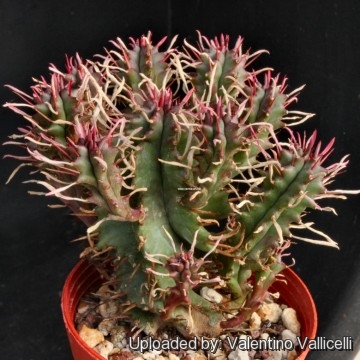 Winter Photo by: Valentino Vallicelli
Winter Photo by: Valentino Vallicelli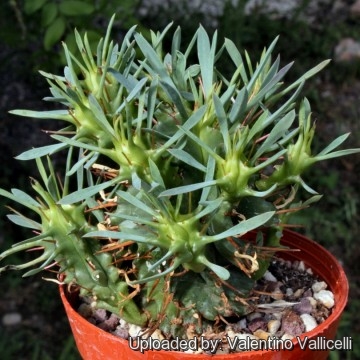 Summer Photo by: Valentino Vallicelli
Summer Photo by: Valentino Vallicelli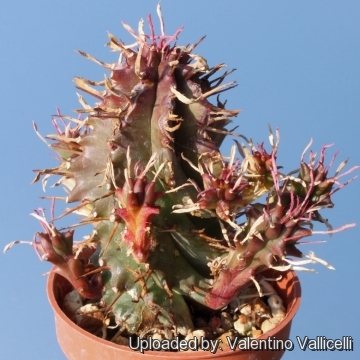 Euphorbia aggregata Photo by: Valentino Vallicelli
Euphorbia aggregata Photo by: Valentino Vallicelli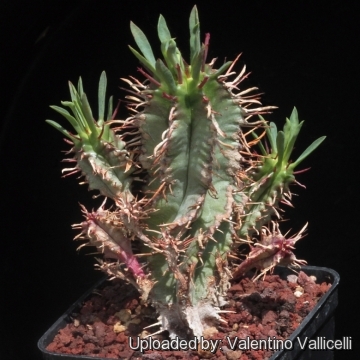 Euphorbia aggregata Photo by: Valentino Vallicelli
Euphorbia aggregata Photo by: Valentino Vallicelli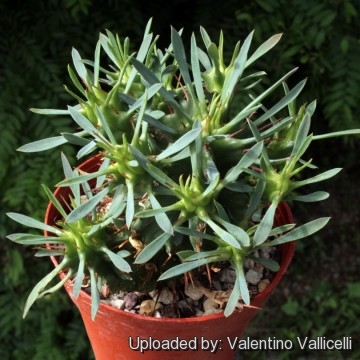 Euphorbia aggregata Photo by: Valentino Vallicelli
Euphorbia aggregata Photo by: Valentino Vallicelli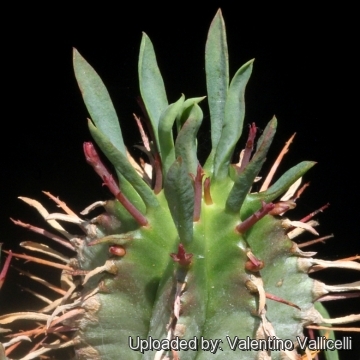 Euphorbia aggregata Photo by: Valentino Vallicelli
Euphorbia aggregata Photo by: Valentino VallicelliCultivation and Propagation: Common and easy to grow plant for pot culture. It grows well in a very draining mineral potting substrate, but it isn't picky about soil. The area to which this plant is native receives rains in both winter and summer, so it can be watered moderately all year around (except in the coldest month of the winter, as it rots easily, especially if overly wet). During the summer they enjoy average feeding and watering. When dormant in winter, keep it totally dry at or around 4°C, even though it seems to tolerate light frosts well. Mature healthy plants are tough and can also be grown out-of-doors where frost is not too severe, but when left out it is more sensitive to frost. They do need a lot of light to keep their compact growth-form, but different clones vary in their tolerance of full sunshine. But best colour if grown in protection in light shade, where the thick purple spines of this low-growing clumping columnar plant have the best colour. Sometimes, in really hot full sun all day long, a plant will bleach out a bit
Propagation: It is propagated by cuttings (It branches enthusiastically, and offsets are readily available). If you remove an offset, remember to let it dry for a week or so, letting the wound heal (cuttings planted too soon easily rot before they can grow roots). It is better to wash the cut to remove the latex.
Warning: As with all other Euphorbias when a plant get damaged it exudes a thick white milky sap known as latex. This latex is poisonous, and may irritate skin. Pay extreme attention not to get any in your eyes or mouth.
Cultivated plants must be handled carefully.

















